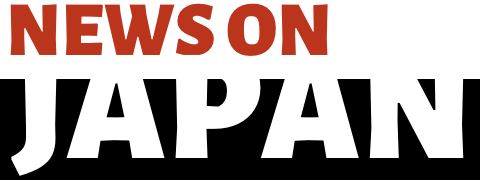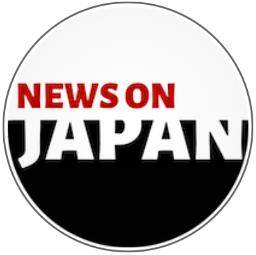OSAKA, May 17 (News On Japan) - Japan’s policy to provide free high school tuition for both public and private schools is expanding options for families who once gave up on private education due to cost. However, in Osaka, where this policy was implemented ahead of other regions, even prestigious public high schools are now struggling to fill seats.
The prefecture has begun discussions to revise the one-school-only application rule that limits student choices. Newscaster Naomi Trauden reports on the shifting ground of public education.
Starting in the 2026 academic year, high school tuition will be made free nationwide. One mother, raising an elementary school child, said, "The cost of education can be heavy, so this is a relief. Now, choosing between public and private isn’t such a big issue. It gives us more options." She added, "If my child is drawn to private school, that’s fine. If they prefer public, that’s also fine. I don't feel strongly one way or the other."
However, not everyone is optimistic. Some citizens say public funds should be directed toward more urgent needs like food and daily support, especially amid rising living costs.
In Osaka, where tuition-free private education began in 2024, the impact has already been dramatic. At private Kagura Gakuen High School in Osaka City, enrollment has surged by 50% this year, growing by about 100 students to 300. “Private schools used to be seen as expensive,” said one school official. “Now that tuition is free, the barrier has dropped and it’s easier to choose them.”
Kagura Gakuen has raised its annual tuition from 576,000 yen to 630,000 yen. Under Osaka rules, tuition exceeding 630,000 yen must be covered by the school itself. Many private high schools are pushing fees right up to this threshold. Some critics argue this amounts to opportunistic price hikes under the free tuition scheme.
The school introduced a new manga and illustration course this year, hiring external professionals to teach six hours a week. The fee increase has been used to enhance the curriculum. Additional upgrades include a newly installed elevator and revamped restrooms, classrooms, air conditioning, and gym floors. The school says these changes aim not to compete, but to provide an environment where students can thrive.
Students in the manga course say they enjoy learning from real professionals and feel motivated by classmates who share their passions.
Meanwhile, public schools are facing mounting pressure. Osaka Prefectural Kawa High School, founded in 1909 and known as an elite academic institution, failed to fill its enrollment for the first time since the current entrance system began in 2016. The school's 2025 applicant-to-seat ratio fell below 1.0, dropping to 0.94. Social media dubbed the shock “Negawa Shock,” expressing surprise that even top schools are struggling.
In Osaka, more than 30% of students apply only to private schools, while nearly half of the 131 public high schools have unfilled quotas. This trend predates the nationwide rollout of the free tuition policy. Kawa High School’s aging building, now over 80 years old, lacks sufficient investment due to public budget limitations. While the school plans to renovate its toilets this year, outdated facilities still influence middle schoolers' choices.
Some say greater investment in public schools is essential to preserve their appeal. One official commented, "Free tuition is greatly appreciated by families. But we hope the same level of investment being made in private education can also be extended to public schools."
The tuition-free policy has also had unexpected side effects. Cram schools, especially those targeting prestigious private middle and high schools, are seeing a surge in demand. One such Tokyo-based cram school, previously focused solely on public schools, recently added a dedicated private-track program and even opened a new building for it. “We’ve been surprised by the response,” said a staff member. “Many parents are now using the money they save from free tuition to invest in extra courses.”
One such cram school now charges 20,000 yen per month and has seen a noticeable increase in students. Experts warn that the policy could widen disparities if not implemented carefully.
Educational advisor Komura from Benesse Educational Research Center says that schools must now compete for students, but warns that without adequate teachers to execute new programs, reforms may fail. Schools across Japan are already reporting a teacher shortage.
Komura also raised concerns about funding. “If the budget is drawn from within the existing education framework, it could mean cuts to teacher salaries or university research funds, which would be unacceptable,” he said.
As the full-scale rollout is set for next year, the consequences remain uncertain. Public and private schools play different roles across regions, and a one-size-fits-all approach may not work nationwide. While the policy may help more students attend their ideal schools, it could also dampen academic motivation if not paired with broader support.
Under the current plan, tuition equivalent to about 120,000 yen for public high schools will be covered without income restrictions starting this year. Next year, average tuition for private high schools will also be subsidized nationally.
During a recent panel discussion, one Tokyo-based parent said the policy is helpful but questioned whether families in less urban areas with fewer school options would feel the same benefit. Another pointed to a Nikkei survey conducted in February in which 70% of economists opposed free private high school tuition, citing concerns it would encourage tuition inflation and undermine public school enrollment.
The Japan Innovation Party, which championed the policy, has faced increasing scrutiny. As debates continue, Japan’s prefectural governors have submitted a formal request to the Ministry of Education, calling for emergency financial support to improve public school facilities. For many, the fear is that without balanced investment, public education could fall into decline.
Source: テレ東BIZ















